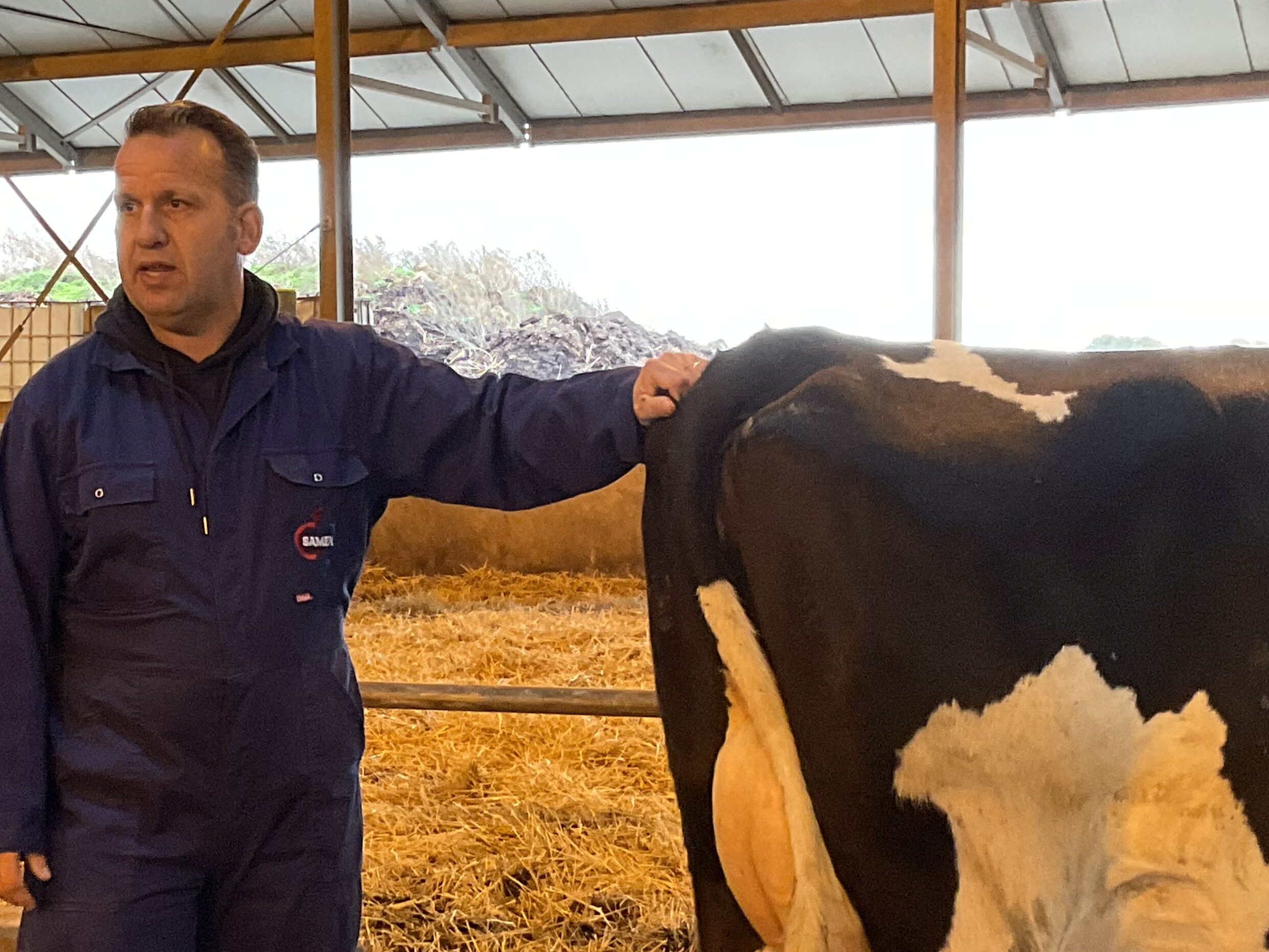WHAT DO WE WANT COWS TO DO FOR US?
The form and function of a cow must be well balanced to enable her to efficiently convert grass into milk. Preferably high milk production, achieved during a long and problem free lifetime. And that is exactly what cows do for us. In order to realise this goal, the cow should conform with a certain body shape.

Because a cow’s form determines how well she can function, it is important to breed an animal with the correct, desirable form. The aAa system – popularly referred to as triple A – is a proven method used worldwide to make the right mating matches between a cow and a bull by focusing on the form and function of the animal. The aAa system has existed in its original form for more than 70 years.
Improving the next generation of cows
Maurice Kaul: “It is the farmer’s responsibility in consultation with the AI organisations to improve the next generation of cows. It’s a familiar experience for many farmers, you match a good bull and a good cow but a few years later the daughter starts lactating and fails to meet your expectations. And the other way round, some daughters with lower expectations may perform surprisingly well.
“Breeding is not a sum of breeding values!”
Maurice Kaul
These farmers are often guided in their mating selections by the figures: but breeding is not a sum of breeding values! A breeding value does not indicate a root cause, but displays in a linear fashion the average performance of daughters. The aAa system can be applied to individual cows to introduce or retain the desired balance in the next generation. When aiming to improve the herd, I want to know which animals I should use to maximise the chance of better offspring before I decide which bull to use.”
aAa system used by one out of five farmers in the Netherlands
In the Netherlands, about 20% of farmers apply the aAa system. They all have different issues to deal with in the herds on their farms. By making the right combinations, they can breed more uniform calves and reduce extremes in the cow’s build, resulting in fewer problems at calving. The number of heifers that function poorly due to defects in their build declines, reducing the number of underperforming animals and therefore increasing yields and the results. Balanced, well-built animals experience fewer problems and are longer lasting with higher lifetime production. Above all, this type of cow makes herd management a pleasure.
Extremes equate to problems
Cows that do not stand out from the herd are the strength of a dairy farm. They can almost go unnoticed simply because they are easy to manage and experience few problems. And they blend into the background thanks to their better balance. It’s the extremes that stand out, because as Maurice says: “Extremes equate to problems!”
There are practically no bulls that are completely in balance. They almost always have a quality to a greater or lesser extent, sometimes unintentionally but inevitably, because that is how they have been bred. Maybe a trait in the animal’s functional form, but equally a health parameter such as a tendency for a high somatic cell count. That is the fundamental law of inheritance; one extreme trait is almost always associated with another extreme trait.
So when choosing a bull, avoid selecting a match with extreme breeding values. It is difficult to breed or create balanced offspring from parents with extreme traits. Maurice illustrates this as follows: “A cow’s legs must be long enough so she can be milked easily, every extra centimetre is simply an unnecessary luxury.”

Functional qualities of the aAa codes:
SIX TYPES OF COW
The above clearly reveals that the basic principle of the aAa system is the cow’s skeletal structure. The six numbers used in the code each represent a set of different characteristics. An individual cow is not assessed to be one of these types but often has multiple types of codes. The sequence of aAa numbers assigned by the analyser is displayed from left to right. For bulls, they are written from left to right in the order he possesses them, while the numbers for a cow or heifer are written from left to right in the order she needs them. This makes selection easy.
1 DAIRY
A cow with the qualification ‘Dairy’ has an ample will to milk, a fast milk letdown and more milk for size. She produces milk very efficiently.
2 TALL
A cow with the qualification ‘Tall’ grows relatively faster and is easy to milk. Everything is placed proportionally high, but this does not necessarily mean the cows have a large stature.
3 OPEN
A cow with the qualification ‘Open’ has space in the pelvis which creates room for the udder for calving ease and good fertility.
4 STRONG
A cow with the qualification ‘Strong’ has a larger mature size. She has a healthy udder, healthy feet and legs and a well developed, wide chest with space for the heart and lungs.
5 SMOOTH
A cow with the qualification ‘Smooth’ is a cow with a smooth, even relationship between the various parts of the body and a good feed intake capacity. She can eat a lot relative to her body weight. She will also experience fewer injuries to her teats and legs because she can stand up easily.
6 STYLE
A cow with the qualification ‘Style’ needs less foot trimming and has durable bones. The thurls are centrally positioned between the hips and the pins.

